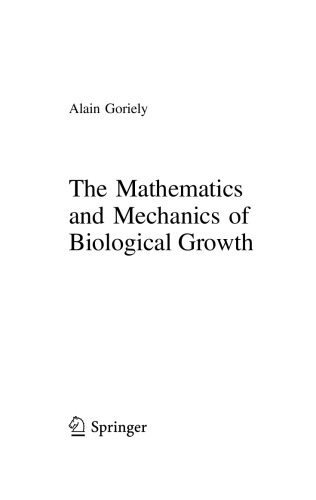

Most ebook files are in PDF format, so you can easily read them using various software such as Foxit Reader or directly on the Google Chrome browser.
Some ebook files are released by publishers in other formats such as .awz, .mobi, .epub, .fb2, etc. You may need to install specific software to read these formats on mobile/PC, such as Calibre.
Please read the tutorial at this link: https://ebookbell.com/faq
We offer FREE conversion to the popular formats you request; however, this may take some time. Therefore, right after payment, please email us, and we will try to provide the service as quickly as possible.
For some exceptional file formats or broken links (if any), please refrain from opening any disputes. Instead, email us first, and we will try to assist within a maximum of 6 hours.
EbookBell Team

4.1
60 reviewsMathematics Subject Classification (2010): 74L15 Biomechanical solid mechanics • 74B20 Nonlinear elasticity • 92C10 Biomechanics • 92Bxx Mathematical biology in general • 92C30 Physiology (general) • 92C50 Medical applications (general) • 92C80 Plant biology
This monograph presents a general mathematical theory for biological growth. It provides both a conceptual and a technical foundation for the understanding and analysis of problems arising in biology and physiology. The theory and methods are illustrated on a wide range of examples and applications.
A process of extreme complexity, growth plays a fundamental role in many biological processes and is considered to be the hallmark of life itself. Its description has been one of the fundamental problems of life sciences, but until recently, it has not attracted much attention from mathematicians, physicists, and engineers. The author herein presents the first major technical monograph on the problem of growth since D’Arcy Wentworth Thompson’s 1917 book On Growth and Form.
The emphasis of the book is on the proper mathematical formulation of growth kinematics and mechanics. Accordingly, the discussion proceeds in order of complexity and the book is divided into five parts. First, a general introduction on the problem of growth from a historical perspective is given. Then, basic concepts are introduced within the context of growth in filamentary structures. These ideas are then generalized to surfaces and membranes and eventually to the general case of volumetric growth. The book concludes with a discussion of open problems and outstanding challenges.
Thoughtfully written and richly illustrated to be accessible to readers of varying interests and background, the text will appeal to life scientists, biophysicists, biomedical engineers, and applied mathematicians alike.